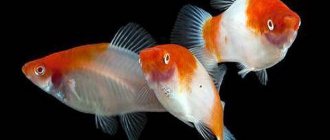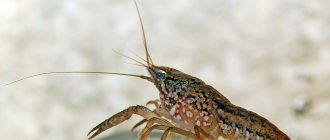The underwater world attracts with its beauty, but a person immersed in it should remember that it can be no less dangerous than the wilds of the Amazon. The outwardly deceptive harmlessness of this element can be costly for a scuba diver and even a person relaxing on the beach if basic precautions are neglected. Not only such monsters of the deep as white or bull sharks, but also significantly smaller representatives of the ichthyofauna can pose a serious threat. For example, a stingray strike is sometimes fatal, even though these fish do not consider humans as food.
Origin of the species and description
Photo: Electric ramp
The origin of stingrays is still a controversial issue. In the most common version, stingrays originated from sharks, some of which exchanged their usual active lifestyle for a moderate bottom dwelling. Due to such changes, the body shape of animals and the functioning of organ systems have changed.
If we consider in more detail the phylogenetic origin of cartilaginous fish, then according to one version, a group of armored fish is considered their common ancestor. From the latter, the cartilaginous ones separated in the Devonian period. They flourished until the Permian period, occupying both bottom areas and the water column, and included 4 different groups of fish.
Gradually, more progressive bony fish began to take their place. After several periods of competition, the volume of cartilaginous animals decreased significantly, out of 4 groups only 2 remained. Presumably in the middle of the Jurassic period, the ancestors of stingrays separated from one of the remaining groups - true sharks.
The literature mentions the name of an ancient representative of stingrays - Xyphotrygonus, which existed about 58 million years ago. Found fossil remains indicate a great external similarity between the ancestor and modern individuals. It had a similar body shape and had a long, awl-like tail, with which the animal struck its prey or defended itself from enemies.
Not only the issue of origin, but also modern classification is controversial. Different scientists classify stingrays as a superorder, division, or subdivision. According to the most generally accepted classification, stingrays are distinguished as a superorder, which includes 4 orders: electric, diamond-bodied, saw-snouted and tail-shaped. The total number of species fluctuates around 330.
Representatives of electric stingrays are capable of reaching a height of two meters in their lifetime, with the average being 0.5-1.5 meters. The maximum weight is almost 100 kg, the average weight is 10-20 kg.
Feeding
The freshwater aquarium stingray is active and mobile, spending a lot of energy. Therefore, he needs to be fed nutritiously with high-calorie food. Daily feeding should be 2-3 times a day.
The fry readily feed on mussels, shrimp, krill, and chopped fish fillets. Adults eat fish, earthworms, and shrimp. Periodically, pets are given fresh greens.
You should not often use tubifex and bloodworms as food. Young stingrays get used to this food and subsequently refuse other food. And food monotony leads to slower growth and deterioration in fish health.
To wean the stingray from the tubifex and bloodworms, a hunger strike method is used. The pet is fed generously until it becomes well-fed. Then they are kept in hunger for several days (no more than a week). A hungry stingray will become irritable and begin to attract the owner's attention. Then you need to give him some unusual food. Perhaps, despite hunger, the stingray will turn away and ignore the unloved treat. But this will not last long: the pet will understand that it will not get any other food, and will begin to eat what it has.
Appearance and features
Photo: Marble electric ramp
The body has a round, flat shape, a small tail with a caudal fin and 1-2 upper ones. The pectoral fins are fused, giving the fish a more rounded appearance and forming so-called wings. Protruding eyes and squirts are clearly visible on the head - holes intended for breathing. In most cases, vision is relatively well developed, however, in some species it is practically absent, and the eyes are buried under the skin, for example, representatives of the genus of deep-sea electric rays. For such individuals, vision is replaced by electroreception - the ability to perceive the slightest electrical impulses emanating from living organisms, and other senses.
The mouth opening and gill slits are located on the underside of the body. During respiration, water enters the gills through the splatter and leaves through the slits. This method of breathing has become a distinctive feature of all stingrays and is directly related to the bottom lifestyle. If, when breathing, they swallowed water with their mouths, like sharks, then sand and other soil elements would flow with the water to their gills, injuring delicate organs. Therefore, the intake is carried out on the upper side of the body, but the exhaled water from the cracks helps to fan the sand in search of prey.
By the way, due to this arrangement of the eyes and mouth, stingrays physically cannot see what they eat. The upper part of the body has a very diverse coloration, which depends on the color background of the habitat. It helps fish camouflage and hide from predators. The color range ranges from dark, almost black, like the black electric stingray, to light, beige, like some species of the genus Narcina.
The patterns on the upper side of the body are very diverse:
- clear and bright large spots, like those of the ocellated electric stingray;
- small black circles, like spotted daffodil;
- motley blurry dots, like a marble stingray;
- vague, large dark and light spots, like a Cape Narca;
- ornate patterns, like those of the genus Diplobatis;
- dark, almost black contours, like a daffodil;
- monochromatic color, like that of the short-tailed gnus or black stingray;
- The lower part of the body in the majority of species is lighter than the upper part.
Content
The motoro ray is a large pet that needs a spacious aquarium. If there is only one individual, then the volume of the tank should be 300 liters. If there are two or three pets, then the capacity of the aquarium should be 700-800 liters.
The aquarium stingray grows quickly, adding 20 cm per year. Therefore, it is better to immediately buy a large tank than to change it later.
The aquarium must have a lid, since the stingray behaves actively during feeding, rushing around, sticking out of the water. There is a risk that he may somersault over the edge of the tank and fall onto the floor. Also, you should not place switched-on electrical appliances near an open aquarium, as an angry pet can splash water and flood the equipment with it.
Water parameters
The vital activity of stingrays is accompanied by a large volume of waste, so it is impossible to do without a strong filter and a high-quality air supply system.
Water parameters:
- Temperature – 25-28°C;
- Hardness – no more than 15° dGH;
- Acidity – about 7 pH.
Change a third of the water weekly.
Lighting
Stingrays love moderate lighting. It is important to establish a 12-hour cycle between light and dark.
Vegetation
It is not necessary to plant plants. But if you want to green up your aquarium, then it is better to use pots for planting, since plants planted directly in the bottom substrate will most likely be eaten by your pet.
You can also choose species that can grow by attaching to the decor. For example, Thai fern or anubias.
Decor
You should not decorate the aquarium abundantly, otherwise the fast-swimming stingray may be injured by piles of objects. When arranging a tank, 2-3 large stones or small driftwood will be enough. The stones should be smooth and rounded; sharp edges and thin protruding branches are not allowed on snags.
Priming
Coarse sand or small round pebbles are used as soil.
Where does the electric stingray live?
Photo: Electric stingray fish
Thanks to their protective coloration, individuals have perfectly mastered the bottom territory of almost all seas and oceans. In terms of geographical distribution, this is a widely dispersed group. Adaptation to a wide temperature range from +2 to +30 degrees Celsius allowed electric stingrays to populate the salty waters of the globe, preferring the warm temperate and tropical zones. They live on various types of relief, and almost all individuals are characterized by low mobility.
Some stay on the sandy or muddy bottom of coastal zones, where, while resting or waiting for prey, they bury themselves in the sand, leaving visible only the eyes and splashes that rise above their heads. Others settled on rocky coral reefs and surrounding areas, camouflaging themselves through their coloration. The range of habitat depths is also varied. Individuals can live both in shallow water and at depths exceeding 1000 meters. A feature of deep-sea representatives is the reduction of the visual organs, for example, the Moresby ray or the faded deep-sea ray.
Also, some individuals have luminous spots on the surface of the body to attract prey in the dark. Shallow-water species living in coastal zones can encounter people while searching for food or migration and demonstrate their electrical ability for defensive purposes.
What does the electric stingray eat?
Photo: Skat
The diet of electric rays includes plankton, annelids, cephalopods and bivalves, crustaceans, fish, and various carrion. To catch moving prey, stingrays use discharges of electricity generated in paired organs at the base of the pectoral fins. The stingray hangs over the victim and seems to hug it with its wings, at which point it releases a discharge of electric current, stunning the prey.
In some cases, one discharge is not enough, so stingrays are capable of producing up to several dozen such discharges, the strength of which gradually decreases. The ability to generate, accumulate and release electricity is regulated by the nervous system, so stingrays control the process and make sure not to waste all the energy, remaining defenseless.
Another way of hunting is to press the prey to the bottom and then eat it. This is what fish do with sedentary individuals who cannot quickly swim or crawl away. In the oral cavity of most species, the sharp teeth are so densely packed that they create a grater-like structure. This is how they differ from most of their closest relatives - sharks. They use their teeth to grind hard prey.
A species such as the short-tailed gnus has the ability to stretch its mouth opening, due to which it hunts and eats large prey, reaching half the length of its body, and in some cases more. Despite their inert lifestyle, stingrays have an excellent appetite.
Diet
In the wild, the diet of stingrays is quite varied and it is almost impossible to replicate it in an aquarium. In search of food, freshwater stingrays continuously swim, exploring the bottom of the aquarium. This innate behavior requires a lot of energy. Therefore, stingrays require a significant amount of high-quality, high-energy food.
The basis of the diet of freshwater stingrays in the aquarium is large lake bloodworms, disinfected and frozen, as well as boiled-frozen shrimp (which can be purchased at a regular grocery store).
The shrimp are given previously defrosted and peeled, without the shell and legs, without boiling. You should not buy peeled shrimp as they are chemically processed. If the stingray is not large, the shrimp should be torn into pieces commensurate with the size of its mouth.
You can also include the meat of soft squid (for example, Peruvian) in the diet of stingrays. Far Eastern squid meat is not suitable as it is too tough.
An excellent food is scallop meat, it is rich in silicon and promotes better maturation of reproductive products in stingrays.
Cod and pollock fillets are suitable as additional food - they are rich in calcium, potassium and phosphorus, which are so necessary for the formation of the cartilaginous skeleton and dental plates.
Small stingrays can be fed with fresh frozen gammarus or frozen large brine shrimp.
Prolonged fasting should be avoided. Several times a year, a stingray can fast for 2-3 days, but it is better not to allow such cases to occur too often.
Features of character and lifestyle
Photo: What a stingray looks like
All stingrays are characterized by a solitary lifestyle. As mentioned above, they prefer to quietly spend the daytime, lying on the bottom or burying themselves in the sand. During moments of rest, they scan the surrounding area using electroreception, identifying potential prey or an enemy. Using the same method, they are able to communicate with each other, transmitting and picking up electrical signals, like bats.
This ability is well developed in all stingrays. Fish hunt and actively swim at night, it is then that they rely most on the perception of electrical signals, since even those whose vision is not reduced, it is not clear enough and cannot fully convey the whole picture of the environment, especially in the dark .
In the water column, stingrays move smoothly, as if floating in the water; unlike sharks, they do not need to scurry quickly to maintain breathing. Movement occurs due to synchronized flapping of the pectoral fins, or so-called wings. Thanks to their flat shape, they do not have to expend much effort to find their way through the water. Despite their slowness, stingrays are able to swim quickly, especially when escaping from a predator.
Some species have small pectoral fins and the fish move by pushing their powerful tail. Another method of movement is the sharp release of a stream of water from the nostrils located on the ventral side, which allows the stingray to make a circular movement in the water column. With this maneuver, he scares away potential predators, but if he approaches him, an additional protection becomes a discharge of electricity.
How to determine gender
In motoros, gender differences are pronounced. There are two options for determining gender: by female or male.
The female is larger than the male. It is noteworthy that she has two uteruses. That is, it is possible for stingrays to give birth to offspring from two males at once.
What does the male look like: he is smaller, and has specific genital organs visible near his ventral fins. In fry they are small tubercles. In adults, they look like tube-shaped formations reaching a length of 2-3 cm.
Social structure and reproduction
Photo: Stingray fish
Stingrays are dioecious cartilaginous fish. The reproductive system is quite complex.
There are three ways to develop an embryo:
- Some are characterized by viviparity, when all stages of development occur in the mother’s body and full-fledged individuals are born. With this method, small stingrays develop and are born twisted into a tube, this is the only way they can fit in the uterus, especially when there are several of them. Electric rays are characterized by embryonic uterine nutrition of the embryos due to special outgrowths similar to villi, through which nutrients flow from the mother's body to the embryos.
- Other species use ovoviviparity, where embryos are located in the uterus, enclosed in hard membranes. These eggs contain nutrients necessary for the development of the embryo. Maturation occurs in the eggs that the female stingray carries until the offspring hatch.
- Another option is oviparity, when the female lays peculiar eggs containing a large supply of nutrients, securing them to the elements of the substrate using special ropes.
Young, newly born or hatched fish are already capable of producing electric current. Due to the fact that the offspring are born well adapted for survival, the number of embryos varies in different species, but on average does not exceed 10 individuals. Stingrays are characterized by sexual dimorphism. Sexual maturity occurs when the rays reach a certain size, for example, in the Japanese narc, females become capable of reproduction at a body length of approximately 35 cm, and males at a length from 20 to 40 cm.
Natural enemies of electric stingrays
Photo: Electric ramp
All stingrays, including electric ones, are hunted by larger predatory fish. In most cases these are sharks of different species. It is precisely because of the presence of a large number of natural enemies that camouflage coloring, a benthic lifestyle, nocturnal activity and protection by electric shock allow them to maintain their numbers.
Another enemy for flatfish are various types of parasitic flatworms. Stingrays become infected with them while feeding, and become their permanent or temporary hosts. This is not surprising, because stingrays eat everything they find, not excluding dead organisms that could be the next carriers or hosts of worms.
In addition to predatory fish and parasites, electric rays are threatened by fishing for other fish species, which indirectly affects the population size.
Habitat in nature
This species is widespread in South America. It is found in Colombia, Peru, Bolivia, Brazil, Paraguay and Argentina. Inhabits both the Amazon and its tributaries: Orinoco, Rio Branco, Parana, Paraguay.
Like other representatives of the species, it is found in various biotopes. These are mainly sandbanks of large rivers and their tributaries, where the substrate consists of silt and sand. During the rainy season they move to flooded forests, and during the dry season to formed lakes.
It is worth noting that despite the popularity of the motoro ray in the aquarium hobby, there is still no sufficiently accurate classification of representatives of this family. New species that have not been described before are discovered periodically.











